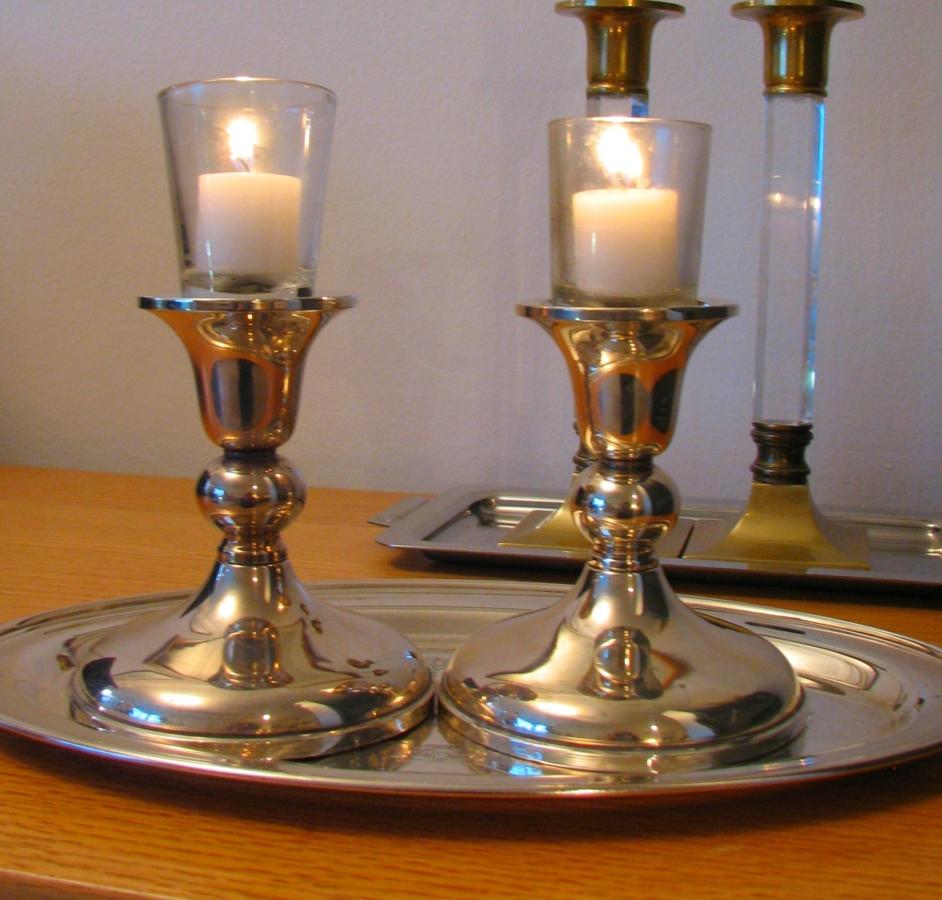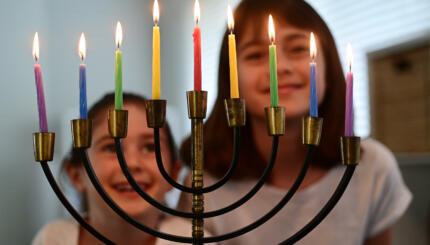Reprinted with permission from JOFA,The Jewish Orthodox feminist Alliance.
The ritual of candle lighting, although incumbent on both men and women, has historically been associated with women. Visual evidence for women’s role is found in illustrations from early periods. In Eastern Europe, women’s tombstones were traditionally engraved with images of Shabbat lights or candles, sometimes accompanied by a woman’s hands blessing them. Today, candle lighting is a observed by many women who do not observe other religious rituals. While many married women now share in kiddush–the blessing over the wine, and hamotzi–blessing over the bread, at the table, few are willing to give up being the one to light the candles.
Returning The Light
Some sources characterize women’s candle lighting as a rectification–a tikkun–for Eve’s sin: just as the biblical figure diminished the light of the world through her sin in the Garden of Eden, women can return light to the world through lighting Shabbat candles. But there is another way to view candle lighting. Those looking at candle lighting as a reward can turn to kabbalistic sources that view women as the bearers of life and light to the world.

As Shabbat itself is a remembrance of creation, zekher lema’asei bereishit, so a woman lighting Shabbat candles reenacts God’s creation of the first light–the ohr haganuz. Through the generations, the woman has traditionally been seen as the Shabbat Queen, bringing light and Torah into her house and into the world. When a woman lights candles on earth, candles are kindled in the divine realm, symbolizing the union and harmony between heaven and earth that is achieved on Shabbat.
A Time for Blessings
Thus, the time of candle lighting is considered a very personal and auspicious time, appropriate for expressing innermost feelings. There exist numerous individual and personal prayers from diverse Jewish communities to be recited at this time. Women saying these prayers often declared that their mitzvah of candle lighting was equivalent to that of the High Priest in the Temple.

Help us keep Jewish knowledge accessible to millions of people around the world.
Your donation to My Jewish Learning fuels endless journeys of Jewish discovery. With your help, My Jewish Learning can continue to provide nonstop opportunities for learning, connection and growth.
Before lighting, many have the custom of putting coins into a tzedakah box. After lighting, one covers one’s eyes in order not to enjoy the lights until the blessing is recited. Although the mitzvah of candle lighting can be fulfilled with one candle, as this traditionally would enable oneg Shabbat, the enjoyment of Shabbat, we generally light two or more candles.
Symbolism
Indeed, once one lights a certain number as a norm, one should continue lighting that number and not light less. Lighting two candles has several meanings. The two candles represent the two versions of the biblical commandment, “to remember the Shabbat “and to “keep the Shabbat,” or, according to Kabbalah, the masculine and feminine aspects of God’s creation; some early sources suggested that one candle is to illuminate the home and the other to honor Shabbat.
Some women light more than two candles. Some mothers light one candle for every member of the family. Some light six to represent the days of the week leading up to Shabbat, and others light seven corresponding to all the days of the week. The ten wicks on the ceramic Libyan Sabbath lamp were said to represent the Ten Commandments; others light 12 lights representing the 12 tribes.
There is a practice that if one forgets to light candles on any Friday evening, one should increase the number of candles ever after. Yet, this practice seems to relate to the notion of candle lighting as a punishment or as a rectification–hardly to the joy and feeling of specialness that most women feel when lighting.



